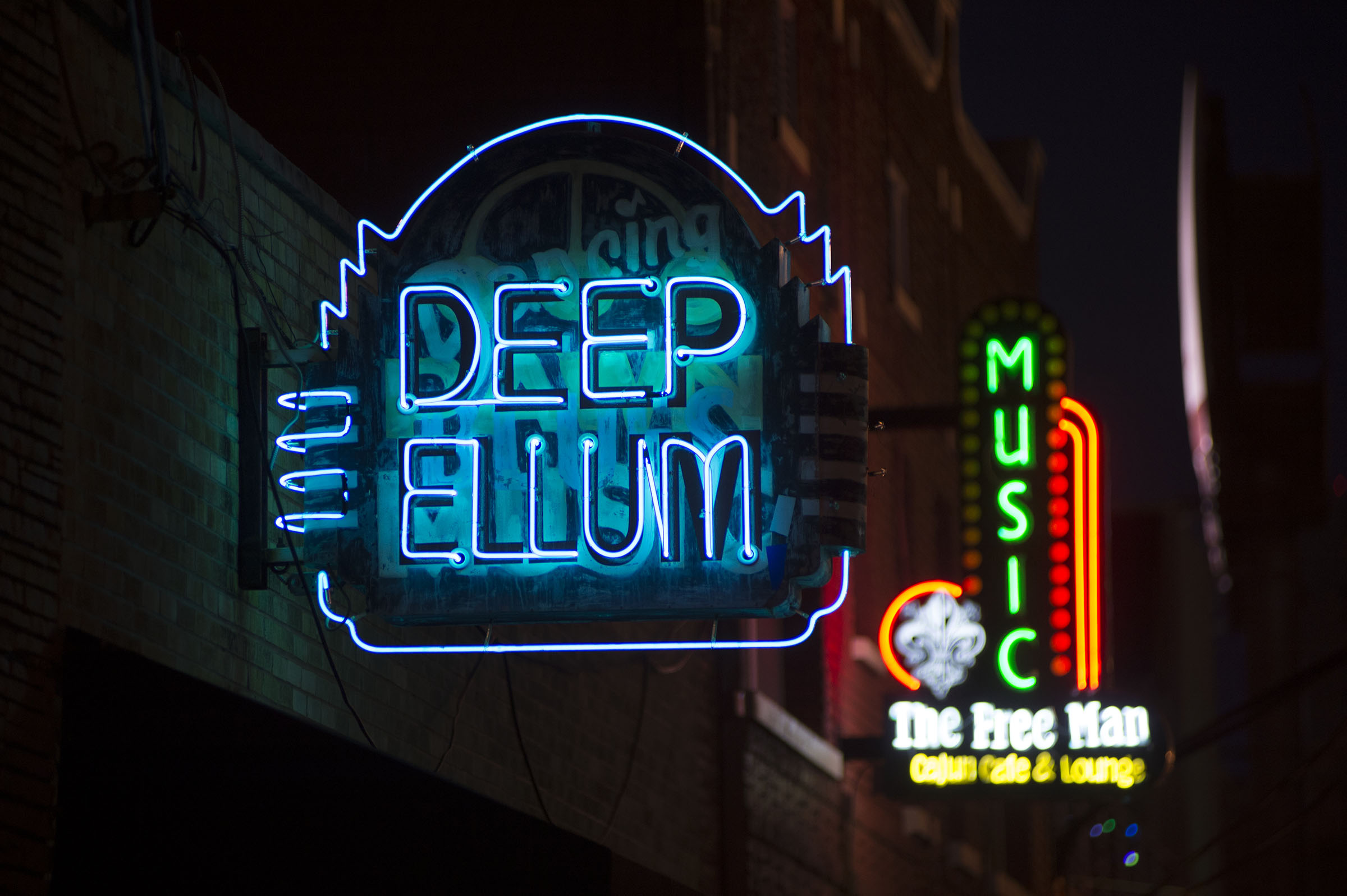
Deep Ellum in Dallas Texas. Photo by Michael Amador
A little more than a mile from where Dallas founder John Neely Bryan’s reconstructed cabin marks the first settlement of the city, Elm Street crosses under the Central Expressway and ushers in a different vibe. Gone are the high-rises and plazas with fountains. The streets here are lined with single and two-story buildings covered in bright-colored murals and signs.
The area known as Deep Ellum isn’t monochrome. It’s always been eclectic.
It’s also older than you think. This year marks the 150th anniversary of its establishment. The milestone will be celebrated with a variety of events that tell the history of the area. Dallas Mavericks owner Mark Cuban will serve as honorary chair of the festivities, which kick off Sept. 29 with the unveiling of a National Register of Historic Places marker in front of The Kimpton Pittman Hotel. (The building itself dates to 1916 and was designed by African American architect William S. Pittman.) The following day is the opening of the Deep Ellum Community Center. Located in an 1892 building that once housed the City Hotel, the center will support mentorships, cultural programing, and walking tours of the neighborhood.
Deep Ellum, known today for its music and art scene, got its beginnings in 1873 when the railroad came roaring through town. With it arrived a new set of immigrants. The nexus of Houston & Texas Central and Texas & Pacific railroads was the perfect spot for the newcomers to set up shop.
In the late 19th century, Jewish immigrants who were fleeing persecution in Eastern Europe made their way up from Galveston and Corsicana, says Alan Govenar, photographer, filmmaker, and author of Deep Ellum and Central Track: Where the Black and White Worlds of Dallas Converged. They helped establish the commercial district just east of downtown. In the 1920s, African Americans came from East Texas after the boll weevil decimated the crops there. Day laborers in Deep Ellum waited at the railroad station to be hired and taken to pick cotton on nearby farms. Pawn shops served as quasi banks for people who couldn’t get loans elsewhere.
“It was this nexus,” Govenar says. “This meeting ground.”
In their off-time, the immigrants in Deep Ellum played tunes that reminded them of where they came from. “There weren’t nightclubs, per se,” Govenar says. “There were cafes. There were variety theaters. It was a frontier area, in a certain way, and it was music that was brought from other places.”
Perhaps the best-known genres associated with Deep Ellum are jazz and blues. The latter comes from music made by the first generation of African Americans born after the abolishment of slavery, Govenar says.
Blind Lemon Jefferson was one such artist. He was a street performer who stood outside of R.T. Ashford’s music shop and sang for tips. He had a two-octave vocal range and had a tin cup attached to the neck of his guitar. “He was the most seminal country blues singers of his generation,” Govenar says.
Between 1925 and his death in 1929, he made more than 90 recordings. Visitors to Deep Ellum this fall will get a taste of what it was like to record music in those days at a permanent exhibit still in the works that will be an authentic 78 rpm recording studio inside the Deep Ellum Community Center. Select musicians will get the opportunity to lay tracks on a record inside of it.
The place where Blind Lemon Jefferson stood was the “threshold between the Black and white worlds,” Govenar says. If the shop were around today, it would be around the frontage road of US 75 and Pacific Avenue. But it’s not there.
Because the Central Expressway marks the delineation between downtown and Deep Ellum, it’s also a spot that marks some of the tougher moments in the 150-year history of the neighborhood. Under the eight-lane highway on Sept. 30, Govenar will use the concrete pillars near Commerce Street that hold up Central Expressway to showcase pages and advertisements from business directories printed between 1911 and 1925. The shops along a three-block stretch were demolished to make way for the highway.
“That is about the Black businesses that were bulldozed away,” he says of his expressway exhibit, which he has titled Invisible Deep Ellum. “The idea of this installation is to draw attention to a difficult period of Dallas history.”
The Deep Ellum celebration continues until November and includes exhibits at the African American Museum of Dallas, one displaying works by Govenar and Phillip Collins called Central Track: Crossroads of Deep Ellum. On Nov. 18, the area will be home to the first Deep Ellum Music Festival, featuring performances by punk, blues, rock, and other types of bands, giving visitors a taste of what can be experienced in the neighborhood every other weekend of the year.








